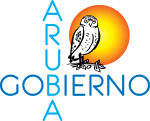World Seagrass Day 2025
ORANJESTAD - March 1 is World Seagrass Day 2025, stipulated by the United Nations General Assembly in May 2022. The resolution adopted proclaims March 1 as World Seagrass Day.
The resolution emphasizes the urgent need for awareness at all levels to promote and facilitate action for seagrass conservation. Directie Natuur en Milieu also contributes to this observation with some essential points. This way, we can learn more about the value of the ecosystem that seagrass fields provide to nature, the environment, and people as part of nature.
What is seagrass, and what kind are there?
Seagrass is a plant/grass that grows in salt and shallow water. In Aruba, there is a list of those protected by local laws. In its publication Know Our Trees, DNM elaborated on each of them. You can find it on our social page @dnmaruba on Facebook and Instagram.
Those included in the "National Decree Protection of native flora and fauna (AB 2017 no.48) are:
- Sugarcane grass, Thalassia testudinum;
- Halodule for wright;
- Syringodium filiforme;
- Halophila bailonis, Halophila decipiens;
- Halophila engelmannii.
These grasses form underwater fields, creating complex, highly productive, and biodiversity-rich habitats. But there is also an invasive seaweed. It is the Halophila stipulacea. It is classified as invasive because it imposes its presence by limiting the growth of endemic (native) species as it grows and bounds. It does so by forming thick mats that give it an advantage over other native species when seeking sunlight, nutrients, and space. Thus, the invasive species degrades the seagrass ecosystem because it takes over the space of the other. The seagrass meadows are essential feeding grounds and are home to many species of marine animals, including sea turtles, fish, water horses, starfish, mantas, and turtles.
Seagrass meadows cover only 0.1% of the world’s ocean floor. Not only does this place support fish farming, but it also improves water quality by filtering it and fighting pollution and contamination in seafood. Since they efficiently store carbon, they can store up to 18% of the world’s oceanic carbon. It makes it one of the nature-based solutions to address the impacts of climate change. Seagrass meadows help with the resilience of marine ecosystems such as coral reefs. They also form the first line of coastal defense by reducing wave energy and protecting people from the risk of flooding, erosion, and storms.
Despite its importance for sustainable development and climate change mitigation, this is an endangered marine ecosystem because only a quarter of all seagrass meadows fall within protected areas.
Some of the human pressures that contribute to the degradation of the fields are:
- Accelerated and visionless coastal development;
- boating activities;
- pollution;
- runoffs; digging and raking of seaweed;
- wastewater discharge.
Seagrass is critical for life underwater and essential for life on land. It is a means of providing food security in fish production.
DNM calls for the inclusion of management, respect for current laws, and conservation and restoration of seagrass fields. These are critical components when it comes to sustainable blue economy strategies. The advice that DNM wishes to leave for the community is to avoid areas with seagrass because this is home and food for many marine species. Respect this ecosystem and give it its value so that it can continue to provide its services.
The image of the species of seaweed in the design is the grass Syringodium filiforme, food for the sea turtles that visit our coast for food, a place to lay eggs and bring their children into the world so future generations can also enjoy them. Happy World Seagrass Day 2025!

